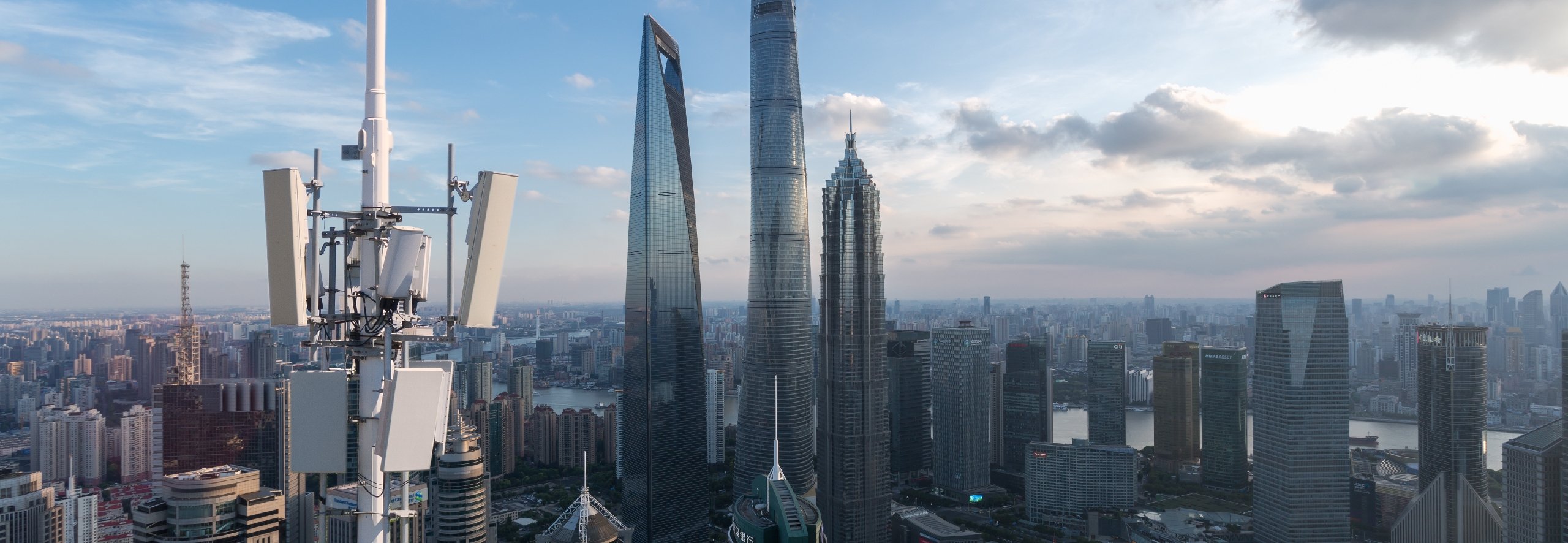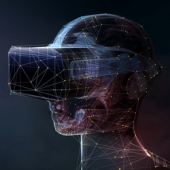Metaverse 2030: Defining the ‘next internet’ and finding ways for businesses to thrive in it
IN BRIEF
- The dollar value of metaverse-related business opportunities is quantified in trillions, and some jaw-dropping use cases have appeared across a diverse collection of industries, including manufacturing, sports and entertainment, healthcare, the military, retail and fashion.
- New metaverse threats — like invisible-avatar eavesdropping and the cloning of voice and facial features via avatars — will join traditional cyberattack methods such as phishing, malware and ransomware.
- A fully realized metaverse requires orders of magnitude more computing power than what is currently available. Networks also need to become much faster, with less latency, so that experiences are not impeded.
A leading metaverse proponent describes the internet’s next evolutionary phase by clarifying what it isn’t. The metaverse is not immersive virtual reality (VR), a VR headset, a new video game or “an all-encompassing clear vision of the future,” according to Matthew Ball, author of The Metaverse: And How It Will Revolutionize Everything. Instead, he defines it in a variety of ways—too many to list here. Among them is one of the simplest: the metaverse is the 3D internet, which will impact us in ways we can’t yet fully understand. Here is Ball’s interview with VISION by Protiviti.
Board members and C-suite executives should perform a cognitive evaluation of their own as they evaluate what the metaverse means to their company. The best evaluations are not only about the metaverse; they also hinge on the organization’s ability to monitor emerging technologies (and combinations of technologies—which the metaverse assuredly is), evaluate their potential threats and opportunities, and conduct use cases for identifying risks. Whether we refer to this capability as R&D, planning and strategy, an innovation capability or something else, its successful execution boils down to fundamental risk management.
That’s not to downplay what the metaverse might become or its staggeringly lucrative potential. The dollar value of metaverse-related business opportunities is routinely quantified in trillions, and some jaw-dropping use cases have appeared across a diverse collection of industries, including manufacturing, sports and entertainment, healthcare, the military, retail and fashion. “The market opportunity is huge and the amount of investment capital going into this particular space is very, very significant,” Nokia executive Raghav Sahgal asserts in MIT Technology Review.
Leveraging this opportunity requires a playbook. Business leaders know that their organizations require a resilience capability to thrive in the “permacrisis” era. Companies also need a repeatable way to monitor and respond to a steady stream of marketplace-changing technological disruptions—AI, quantum computing and the next big things—that also might “revolutionize everything.”
Many technology companies already have this type of capability, and some have placed big bets on the metaverse while developing new offerings related to interoperability, 3D modelling, hardware, networking, payment rails and other metaverse building blocks. Companies in other industries will use the metaverse to generate efficiencies and value via new products, services and businesses. As such, most boards and C-suites should get a feel for what the metaverse is; its needs, benefits and challenges; and how it might evolve.
The next internet
When proponents and writers take cracks at explaining the metaverse, they often refer to enabling, interrelated technologies. The three co-authors of Navigating the Metaverse: A Guide to Limitless Possibilities in a Web 3.0 World, define 20 terms and technologies, including 5G, artificial intelligence (AI), virtual reality (VR), non-fungible tokens (NFTs), augmented reality (AR), decentralized applications (dApps), crypto wallets, decentralized finance (DeFi), play-to-earn games, and smart contracts. One of the book’s co-authors, tech futurist/metaverse strategist Cathy Hackl, calls the metaverse as “a convergence of our physical and digital selves,” while noting that the metaverse hasn’t yet been fully realized—a process most experts expect to take five to 10 years.
In their metaverse coverage, writers and reporters frequently mention Second Life as a failed metaverse precursor and credit sci-fi/speculative fiction writer Neal Stephenson with coining the term in his prescient 1992 novel, Snow Crash. Today, Stephenson is cofounder and chairman of Lamina1, a layer 1 blockchain optimized for the open metaverse. The term frequently sparks confusion and adverse reactions. John Riccitiello, the boss of a real-time gaming development platform Unity, told Fast Company that “metaverse” is “one of the most misused and abused, hyperinflated terms I’ve seen in a long time.” He prefers “the next version of the internet,” one that will be significantly more three-dimensional, interactive, social and real-time than it is today.
Hackl’s “Web 3” framing will help those less familiar with the metaverse: Web 1 connected information and produced the internet, Hackl tells CoinDesk, while Web 2 connected people via social media. “Web 3 connects people, places, and things—or people, spaces and assets,” Hackl adds. “And those people, spaces and assets can sometimes be in a fully virtual environment…”
Meanwhile, Ball considers the metaverse as a fourth computing wave, following mainframe computing, personal computing and internet/mobile computing. He also has developed a definition while stressing that we cannot predict what the metaverse will look like in 2032 any more accurately than we could have predicted how the 2022 internet would look and work in the 1980s when the internet protocol suite was being adopted. Ball describes the metaverse as “a massively scaled and interoperable network of real-time rendered 3D virtual worlds and environments which can be experienced synchronously and persistently by an effectively unlimited number of users with an individual sense of presence, and with continuity of data, such as identity, history, entitlements, objects, communications, and payments.”
Ownership is a key concept in the metaverse—or whatever you prefer to call it—which is why Hackl and her co-authors discuss DeFi, crypto and smart contracts prior to offering definitions. “What’s most striking about the metaverse (and its cousin, Web3) is the emphasis on ownership,” writes Harvard Business Review senior editor Thomas Stackpole. “Users can have a stake in almost anything; they can vote on decisions about the communities they belong to and the apps they use, make and sell NFTs, and even get paid for playing games in decentralized apps that run on peer-to-peer networks rather than on servers. User ownership is a real revolution because it creates a new economy … In this vision, users can monetize their digital assets, selling, renting, or even borrowing against them.”
"User ownership is a real revolution because it creates a new economy… In this vision, users can monetize their digital assets, selling, renting, or even borrowing against them.”
- Thomas Stackpole, Harvard Business Review
Building blocks and challenges
Ball’s definition above is helpful because it references most of the enablers that must be in place for the metaverse to fulfill its promise. These include:
-
Interoperability: The immersive, 3D virtual worlds that some video games offer today need to be connected in the metaverse. This requires data, digital identities (that remain intact and protected across different metaverse worlds), payment standards and 3D objects to move freely across different metaverse worlds and realms. Think of APIs (a software interface allowing computer programs to communicate) but on a massive, multidimensional scale. “In an interoperable metaverse, your identity and ability to engage in commerce are as seamless as in the real world,” notes Tech Target’s George Lawton while parsing the interoperability challenge. “Consumers are able to bring their wallets and smart objects across virtual worlds, just as they bring their credit cards and backpacks across stores today. That said, interoperability in an open metaverse will be a little more nuanced than in the real world and technically more challenging, as all the systems and standards to make it happen are not yet in place.”
-
Governance: Technical interoperability requires agreement among companies and the humans who work inside those organizations. Microsoft and Meta demonstrated that spirit of cooperation last fall when it was announced that the Windows operating system along with Microsoft’s Xbox games and business applications would be available in Meta’s virtual worlds. Another encouraging sign: the member roster of the Metaverse Standards Forum (MSF) continues to expand. While not a standards organization, the MSF’s mission is to “encourage and enable the timely development of open interoperability standards essential to an open and inclusive Metaverse.” How this and related efforts play out will be important to monitor.
-
Hardware: Lighter, more powerful VR and AR (as well as VR/AR) headsets are being developed and hitting the market, but more hardware is needed, including numerous sensing and haptics devices and technologies (e.g., time of flight camera and flexible strain sensors). New displays, wearables, flexible batteries, transparent antennas, and optical metamaterials represent other metaverse “hardware hurdles.”
-
Computing power and networks: A fully realized metaverse requires orders of magnitude more computing power than what is current available. Networks also need to be much faster, with less latency, so that experiences are not impeded. “One of the biggest challenges, in fact, is networking infrastructure and, arguably, the internet protocol suite itself,” Ball emphasizes. “This is actually the most important element when it comes to democratized access,” he says. He points out that reliable broadband access is available to a sliver of populations in the Middle East and parts of Asia. U.S. broadband access also needs to be expanded, especially in rural areas.
[The metaverse] requires data, digital identities, payment standards and 3D objects to move freely across different metaverse worlds and realms. Think of application programming interfaces but on a massive, multidimensional scale.
AI, IoT, blockchain and edge computing also will play a role in driving the next version of the internet. In addition to monitoring progress on building blocks, leadership teams should recognize that some noteworthy metaverse risks also require attention:
-
Data security and privacy: New markets for digital assets expand the attack surface for cybersecurity crimes. The metaverse is not unique on this count. The same risk has arisen due to the massive installation of IoT sensors. New metaverse threats—like invisible-avatar eavesdropping and the cloning of voice and facial features via avatars—will join traditional cyberattack methods such as phishing, malware and ransomware.
-
Global alignment: While the current metaverse requires interoperability, satisfying this need will be difficult given that different global regions and countries take substantially different approaches to managing and regulating internet activity. Countries that can agree to interoperability might enable the metaverse to mature faster from usage and economic standpoints.
-
Customers of tomorrow: As consumer-facing companies vie to attract “customers of tomorrow” in the metaverse, attention will intensify concerning practices related to engaging with and selling to children in virtual worlds.
-
Mitigating the current internet’s worst features: “There are many problems with the internet today,” Ball says, before ticking off a list that includes myths and disinformation, radicalization, toxicity, abuse, harassment, user rights, data rights, data security and data literacy. “[A}nd most of them will become harder in the metaverse. Why? Because more of society is going to move online. And that means more societal challenges will move online. And each of the aforementioned areas will become at least more important if not also technically harder. But I also think it provides us with a reset opportunity,” he says. HBR’s Stackpole concludes that the metaverse will reflect the desires of its user base, “be they entrepreneurship, escape or convenience. Dystopia is one risk. Another is disappointment: we dream of the metaverse but end up with a mall.”
"More of society is going to move online. And that means more societal challenges will move online. And each of the aforementioned areas will become at least more important if not also technically harder. But I also think it provides us with a reset opportunity.”
- Matthew Ball
Citi, Goldman Sachs, McKinsey and Morgan Stanley have all weighed in with estimations of the metaverse’s 2030 market size. Deutsche Bank calculates the overall average of these projections at $8 trillion.
Source: Deutsche Bank
Trillions of opportunities
Even if the metaverse generates only a slim fraction of its projected economic value, it will be worth investing in. Projections vary wildly—in large part due to the unknown ways the metaverse will mature during the next five to 10 years—yet they tend to be massive.
Citi ($8-13 trillion), Goldman Sachs ($6.9-9.3 trillion), McKinsey ($5 trillion) and Morgan Stanley ($8.3 trillion) have all weighed in with estimations of the metaverse’s 2030 market size. Deutsche Bank calculates the overall average of these projections at $8 trillion.
Potential metaverse-related value-generation opportunities exist across most industries and are too numerous to detail. Successful use cases now exist in healthcare (augmented reality surgeries), manufacturing (digital twins, virtual/mixed reality uses on the factory floor), travel (virtual tourism), military (training, battle simulations), and transportation (real-time simulations to improve passenger movement in airports). From a cross-industry perspective, recruiting, onboarding and training activities might also be performed far more effectively and efficiently via the metaverse’s immersive 3D experiences. Digital financial services expert David G.W. Birch is bullish on the financial services industry’s opportunities in the metaverse, which he views as a “nexus for safer commercial interaction and the location of better, cheaper and faster financial services.”
MIT Technology Review organizes opportunities into consumer, enterprise (i.e., designed to drive business value) and industrial (i.e., designed to drive operational value, but with related opportunities for new revenue and new businesses) groupings. From a manufacturing sector perspective, the metaverse has the potential to take digital twinning, a range of current simulations and—more broadly—Industry 4.0 (4IR) capabilities to new levels. A Nokia executive tells the Technology Review that the industrial metaverse can reach “a much larger scale with increasing complexity by creating digital twins of entire systems such as factories, airports, cargo terminals, or cities—not just digital twins of individual machines or devices that we have seen so far.”
B2C and B2B e-commerce improvements and breakthroughs mark another big area of potential benefits. By 2030, Deutsche Bank projects that global retail e-commerce value from the metaverse will reach $2 trillion annually, which the bank estimates will be approximately 20% of total retail e-commerce value. “The metaverse will bring the e-commerce experience to a new level by making it more personal, more real, and more immersive,” according to a Deutsche Bank report on the metaverse’s role in driving an e-commerce revolution.
Since the metaverse is composed of multiple, overlapping technology systems, the next internet’s unexpected evolutionary progress, detours and dead ends will produce related advances and breakthroughs of value to businesses. For example, advances in microfluidics-enabled 3D printing designed to make virtual designs and products tangible could lead to medical and healthcare advances in wearable sweat sensors that use similar technology to measure levels of hormones and chemicals in human sweat.“The metaverse is coming,” Ball asserts. “There’s no turning around... Most forecasts believe that the metaverse by the end of the decade will be between $6 trillion and $13 trillion.” That’s why digital finance guru Birch argues that every business should have a metaverse strategy. They should also have the mechanisms in place for creating it, regardless of where the metaverse’s hypothesis and ambition takes it.
Mind on the metaverse
Once business leaders have a grasp of the moon-shot nature of the metaverse—and its challenges and building blocks—they can turn their attention to monitoring its development and thinking about their company’s place in it. Here are four keys to keep in mind on the metaverse:
-
Don’t buy the hype or the backlash: Recent articles feature plenty of metaverse backlash. “The metaverse was promised as the next big evolution of the internet,” begins a Fast Company article labelling 2022 as the year “we sobered up” about the metaverse, “but that vision hasn’t come very close to realization.” In Fortune’s 2023 forecast, one venture capitalist predicts that a major tech company would shutter all of its metaverse investments “due to continuous drop in revenue and investor pressure.” The metaverse’s early hype can certainly seem overwrought at times. Sober assessments and thinking are welcome; they help pave the way to more practical business applications and use cases, whose results and learnings quietly fuel additional tinkering, iterations and progress that occurs behind the scenes.
-
Consider AI’s journey: “More profound than fire or electricity.” That’s how a CEO of a tech company once described AI. The Economist reminded readers of this analogy in July 2022 while reporting that “managers in real companies are finding AI hard to implement, and that enthusiasm for it is cooling.” The article cited a survey of European AI startups by a VC fund which determined that 40% of those start-ups were not using any AI at all. Seventeen months later, the Economist published a lengthy rundown on AI “permeating the business world.” The two articles also offer an object lesson: this stuff takes time. Advanced technology experiments, failures, learnings and breakthroughs steadily amass behind the scenes. Last year, investors channeled approximately $1.4 billion into generative AI companies, which is nearly as much as the total they invested from 2016-2021, according to Pitchbook.
-
Look closely at gaming: Metaverse proponents routinely cite certain video games—primarily Roblox, Fortnite and Minecraft—as pioneering influences on the metaverse. These games feature “immersive experiences” in 3D worlds in which avatars representing players interact in virtual communities. More recent examples of metaverse-type games include Decentraland, Sandbox and Axie Infinity, among others. The immersive experiences these games deliver include a blend of virtual reality, live-streaming, cryptocurrencies, and social media as players move across an ecosystem of competing products. While non-gamers (i.e., which still describes most humans older than 35) often have difficulty understanding the allure of parallel, immersive worlds, the rapidly growing industry is well worth monitoring. The Ringer’s Justin Charity asks: “How do you improve on Fortnite? By deleting the weapons and turning the whole thing into a crypto mixer for busy professionals? Are we sure?” We are not sure. However, it’s a safe bet that 3D modelling; VR; faster, less laggy networks; computing power leaps; user-generated content; in-world commerce; virtual payment rails and other gaming-driven advancements will all have potentially valuable business applications.
-
Recognize the generational divide: Seventy-six percent of Wall Street Journal readers are older than 30; 34% are older than 50. That’s helpful to keep in mind when reading through the overpoweringly negative comments in reaction to the publication’s feature on pre-teen gamers wanting virtual currency (Robux) in lieu of a cash allowance to buy virtual goods in Roblox. “As adults struggle to find uses for the metaverse, kids are already immersed in the technology, as they earn and spend virtual currency while playing games and socializing on Roblox,” the Journal reports. The hundreds of negative comments the article triggered address the ethics of brands selling to children, data privacy and security, online anxiety, childhood obesity and poor parenting. A large portion of critics questioned the fundamental notion of a virtual world: ProudGrandpa57 asks: “Do virtual coats keep one warm in the winter?” Business leaders setting metaverse strategies would be wise to consider the engrained skepticism held by “proud grandpas” everywhere, as well as tens of millions of other digital non-natives.
Did you enjoy this content? For more like this, subscribe to the VISION by Protiviti newsletter.







































